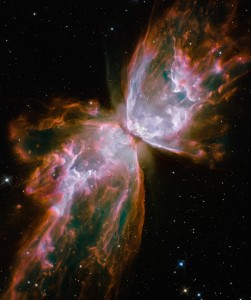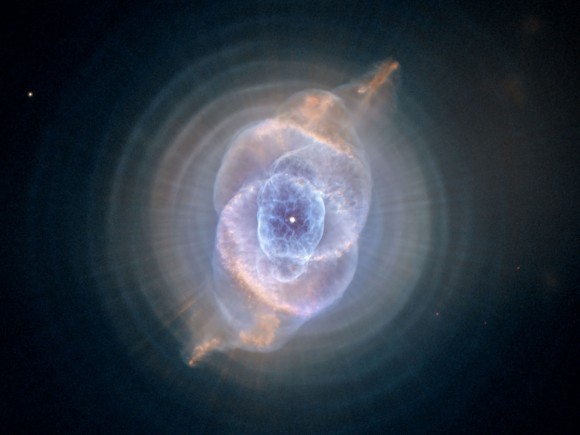aNewDomain — The Hubble Space Telescope was deployed into the Earth’s orbit in April 1990. That means it has been sending images from deep space back to us for over 25 years now. Through the work of the Hubble Space Telescope, our perception of the universe has been forever altered. It’s a legacy that should be celebrated.
— The Hubble Space Telescope was deployed into the Earth’s orbit in April 1990. That means it has been sending images from deep space back to us for over 25 years now. Through the work of the Hubble Space Telescope, our perception of the universe has been forever altered. It’s a legacy that should be celebrated.
Important Star Stuff
NASA has been marking the 25th Anniversary of the Hubble by dotting events throughout 2015. The next one on the calendar will take place at the Goddard  Space Flight Center in Greenbelt, Maryland on June 20, 2015. There will be two presentations regarding the science revealed by the Hubble Space Telescope over its 25 years of operation. I wish I could attend one of these events because it would be fascinating for a science geek like me.
Space Flight Center in Greenbelt, Maryland on June 20, 2015. There will be two presentations regarding the science revealed by the Hubble Space Telescope over its 25 years of operation. I wish I could attend one of these events because it would be fascinating for a science geek like me.
I remember when the Hubble was deployed. It was a cool idea — deploying a telescope into space to get a clearer view of the universe. Of course, I really had no idea what kind of breakthrough science would be revealed over the next 25 years. I don’t think anyone could have known.
Here’s a short list of some of the notable scientific discoveries made possible by the Hubble Space Telescope:
- Hubble Ultra Deep Field (HUDF) and the Great Observatories Origins Deep Survey (GOODS) have provided images of the oldest and furthest away galaxies, seen as they existed billions of years ago. These images give us a better understanding of the origins of the universe.
- The Hubble’s observations revealed how new stars are formed from collapsing clouds of gas and dust. As gravity pulls matter in tighter, the new star will erupt with intense jets of radiation. The result is a spectacular and violent display of the birth of a star.

The Hubble Space Telescope has given us insight into how mid-sized stars like the Sun die.
- These stars eject their out layers of gas into space, leaving behind a white dwarf. The radiation of the white dwarf causes the gases to glow, creating a planetary nebula.
- It looks really cool, too.
Our Discoveries

When it comes to scientific discoveries made by missions like the Hubble Space Telescope and other NASA missions, I think the general public misses a very important part of the story. NASA is a part of the U.S. Federal Government and, therefore, NASA works for us. All of the discoveries made by the Hubble over the past 25 years are our discoveries — they belong to the people as much as anyone else.
Some ambiguous group of scientists didn’t discover how stars are formed, or how stars die, or how black holes work or how the yet to be understood concepts of dark matter and dark energy work. We did: citizens of the United States, citizens of Earth.
Because of the Hubble Space Telescope we are all smarter — we all have a better understanding of the universe than we did 25 years ago. That level of new knowledge and insight should be celebrated by all. It is an accomplishment of humankind and it’s certainly okay, even encouraged, to show some pride.

For aNewDomain, I’m Mark Kaelin.
Note: Because NASA is part of the U. S. Federal Government, the images NASA produces are, for the most part, public domain. That means you can download them and use them for just about whatever. Think about that the next time you are looking for a background image for your PC or smartphone.
All images: Courtesy of NASA













